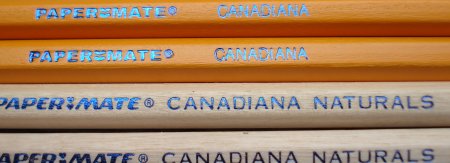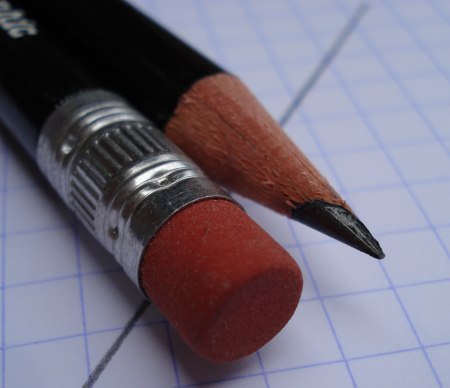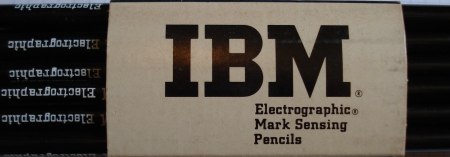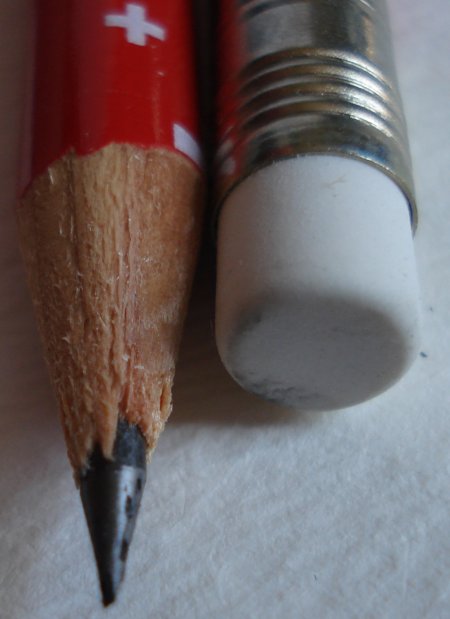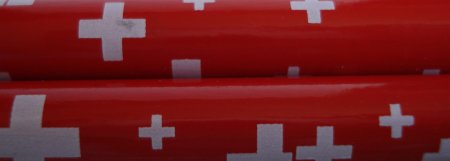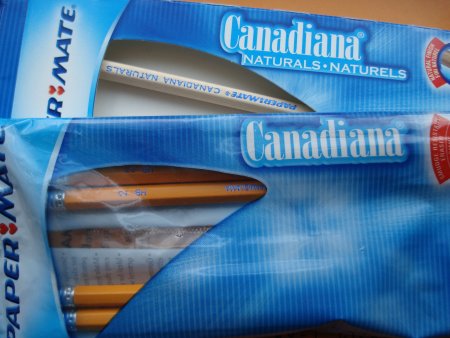
The name is pure marketing, since the pencils are not Canadian in any meaningful way. Sold in Canada by Papermate, a brand of Sanford, which is a division of Newell Rubbermaid, these are everyday office pencils.
They are offerered in two varieties – a typical yellow office pencil finish, and an unvarnished “Naturals” version.

There is one immediately noticeable aspect to these pencils – the wood is extremely white. It is my understanding that most cedar used in pencils today is dyed pink/red, to make it appear similar to the Eastern Red Cedar of years past.
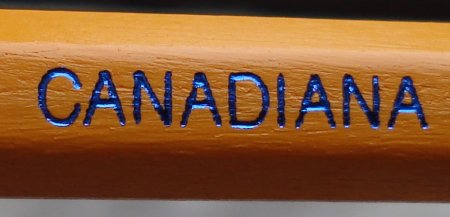
These pencils don’t claim to be cedar, yet they do sharpen just as easily. They also state “Does not contain rainforest wood”. So what wood are they? Hmmm.
The Canadiana cellophane package has a number of claims:
– Smudge resistant eraser for clean removal of pencil marks
– Made from real wood for easy sharpening
– Ideal for schoolwork and general writing
The Canadian Naturals box has some slightly different claims:
– Made from unlacquered wood for a natural feel
– Sharpens easily
– Non-smudge eraser for clean removal of pencil marks
The pencils are quite usable, with a dark, sufficiently smooth (and non-crumbling) though unremarkable lead. The eraser works quite well.
The “Naturals” version seems to be a reasonable compromise between overly finished natural pencils, and those that are a bit too raw.
Overall, I guess they are not bad as office pencils.
